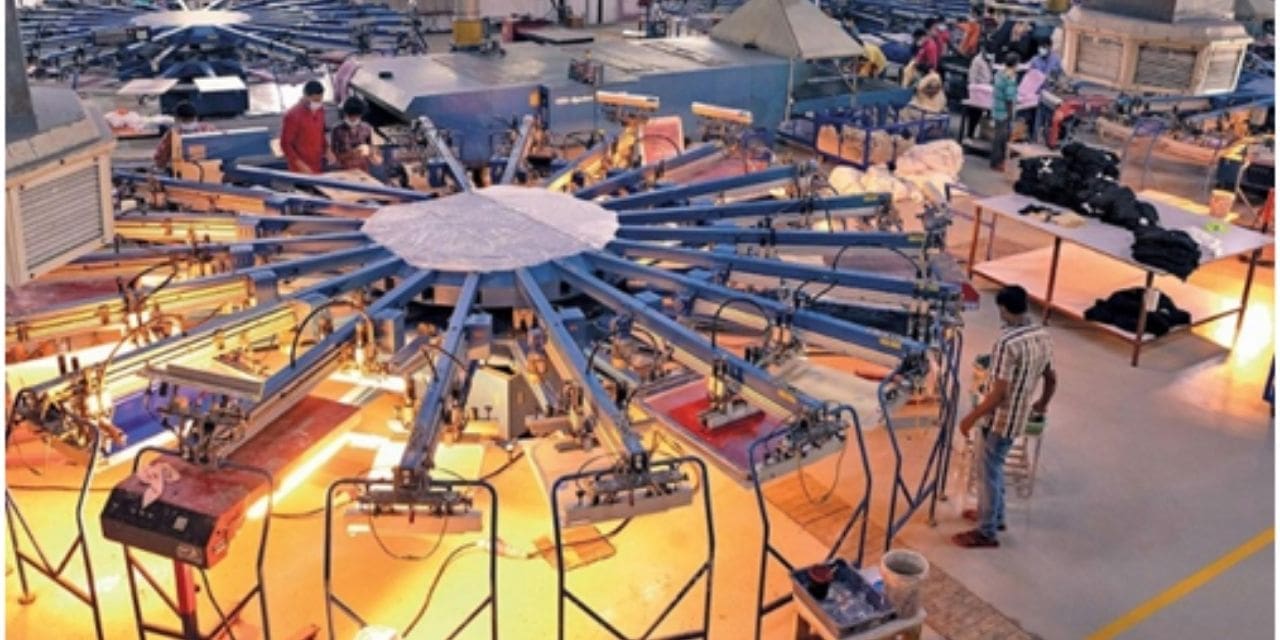Cotton yarn prices have been shooting up like the soaring mercury levels in Tiruppur, driven up by the relentless April sun. Both have been making the city’s knitwear garment exporters sweat bullets. A candy (356 kg) of cotton can now leave a one-lakh rupee-sized hole in a yarn spinner’s pocket. That hole was only half the size 18 months ago. Cotton yarn prices have followed suit too, with a hike of more than 100 per cent to upwards of `400 a kg—a big problem for yarn spinners, because the fine thread is really the backbone of this industrial city.
Nearly 500 km to the southwest of Chennai, Tiruppur is the largest knitwear hub in the country. The self-started cluster generates an annual turnover of $4 billion and employs around 700,000 people. By making and exporting cotton and cotton-blend T-shirts, dresses, sweatshirts, pullovers and other knitted clothes, mainly to the US, Europe, Australia and Canada, it accounts for a fourth of the country’s total garment exports. Oppressive as the heat itself, the increasing yarn prices have been particularly debilitating for the small and medium-scale garment exporters, who cannot afford a yarn-to-garment setup. “Yarn price hike is not new. Usually, it goes up by Rs 2, Rs 5 or even up to Rs 20 per kg. Now, it has been going up abnormally by something like Rs 30 and Rs 50,” says Krish, Managing Director of Victorian Clothings.
The fact is that inflation has driven up the cost of everything from paper to chemicals and dyes to freight charges. But yarn prices are pinching the exporters especially hard because it accounts for 45 per cent of a garment’s cost. Buyers book orders three months in advance on agreed-upon rates, but with cotton yarn prices shooting up by the time of delivery, manufacturers end up selling their goods at zero-margin sometimes, the exporters say. “When it was a hike of something like Rs 20 per kg, the buyers were agreeing to absorb the increase into the price. Now when the price stands more than doubled, they have refused to do so anymore,” says RamuRaju, Partner at Fashion Knits, aRs 75-crore business that mainly makes jackets for brands like Esprit. “Sometimes, we sell at break-even costs because we need the customers regularly. Because of the yarn price hike, I can’t spoil my relations with the buyer,” says Krish.
From a buyer’s perspective, it’s not possible to keep changing the garment prices in a showroom every time cotton yarn prices go up. The exporters say yarn spinners have a take-it-or-leave-it attitude because they have international businesses to rely on. Unlike garments, which are custom-made according to client specifications, yarn is a fairly standard product and can be sold to anybody. “We are stuck in between and our already-thin profit margins have taken a beating,” the exporters lament. Krish (who goes by only one name) estimates his profit margins have halved to 5-7.5 per cent, from 10-15 per cent earlier. Rajuestimates a similar hit to his margin. That also means lesser available working capital, additional loans, longer repayment schedules and increased interest charges.

